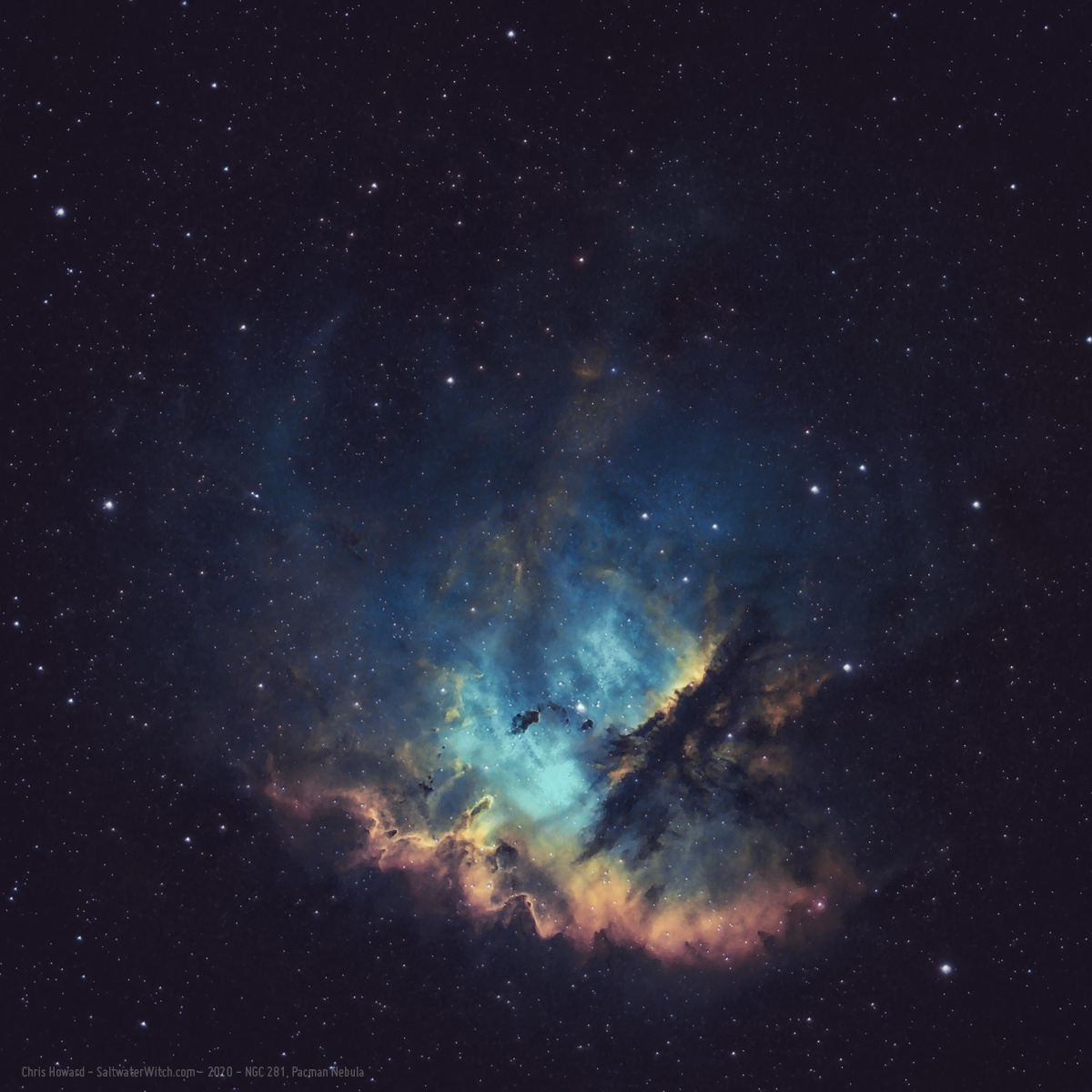New Astro Pier in the Backyard
I'm upgrading the "pier" that I have right off the back deck.
What's interesting is I set that up as a temporary solution for winter imaging. We can get a lot of snow. That was 2 1/2 years ago or so, and having a semi-permanent platform for imaging made things so easy--with fast setup because it was always close to polar aligned. That's also when I started using this generic 6x8 inch aluminum plate for connecting my mounts. This temporary pier was so easy in fact that I continued to use it for the next couple years.
So, I have finally started the upgrade. I'm also using 4x4 treated lumber for this, although 4 4x4s bound together with lag bolts. It's basically a solid block of hard wood that's weather treated.
I have also upgraded the mounting plate. The old one is just connected to the post with 3" deck screws. It's solid for a smaller mount like the iOptron CEM25P. I cut several pieces of 80/20 extruded aluminum for the new mounting plate, and this is perfect for larger mounts like the SkyWatcher EQ6-R Pro.
So, this is what it looks like with one bag of Quikrete, just about to add the second:

And here's a video on some of the details:
Posted October 25, 2020
There's still time to see NEOWISE
Here's the view a few steps from our front door, with Comet C/2020 F3 (NEOWISE) still very clear in the sky, and if you can shoot 10 - 20 second exposures on your camera, even better! That's Ursa Major (the Big Dipper) at the top center--most of it. This is 24mm on the Nikon D750, and it's pretty close to what you will see with your eyes.

Here's another, using the car roof to keep the camera still:
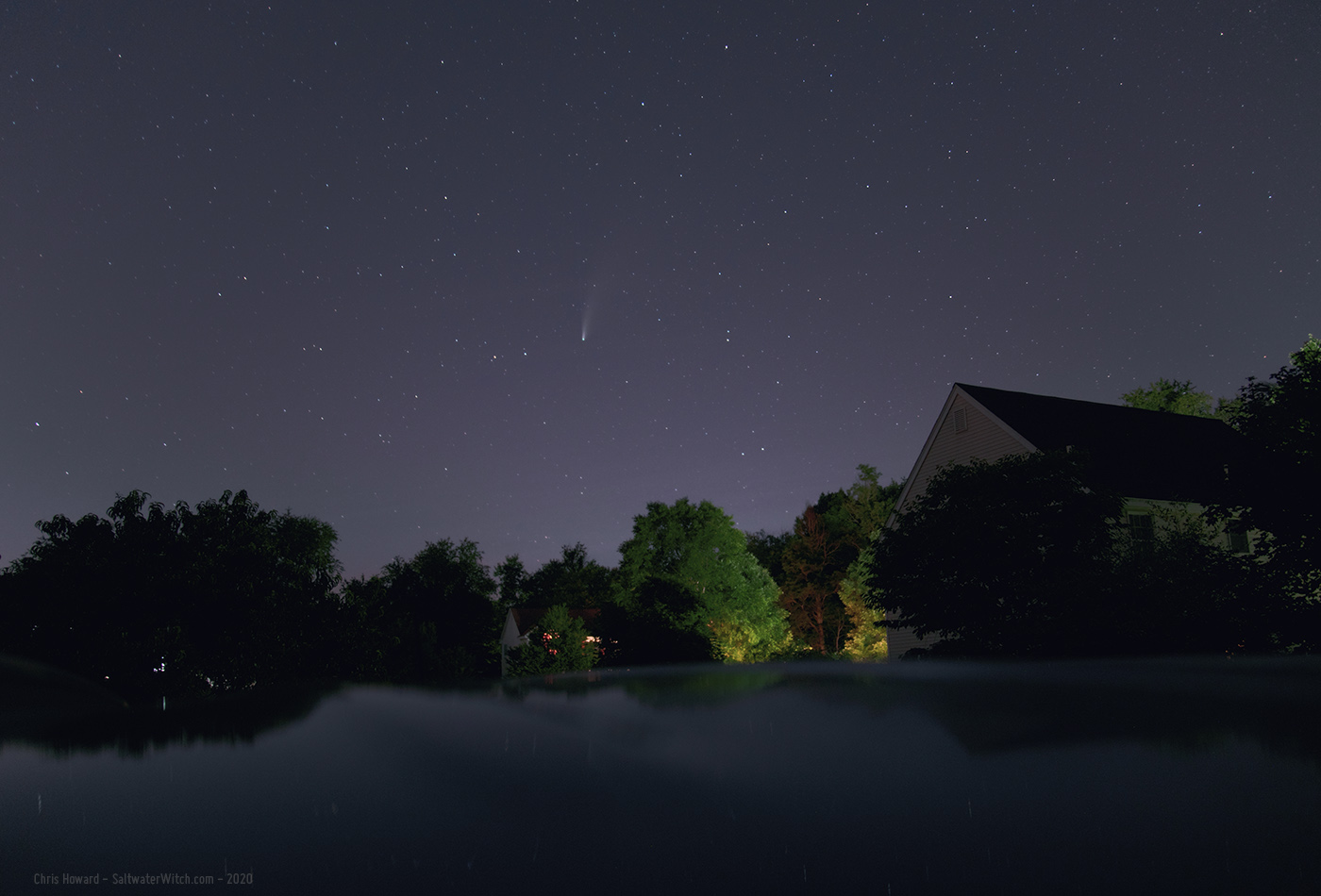
Posted July 21, 2020
Andromeda's core
Something to think about on a Friday night: the Andromeda Galaxy (M31) is moving toward our galaxy, the Milky Way, at a little over 400,000 kilometers per hour, and the supermassive black hole at the center of Andromeda is 100 million times the mass of our sun. Note: at that speed Andromeda will still take 4 billion years to get here. I figure we'll be beyond Kardashev 3 in the next 3 - 4 million years, and we'll simply move our galaxy out of the way.
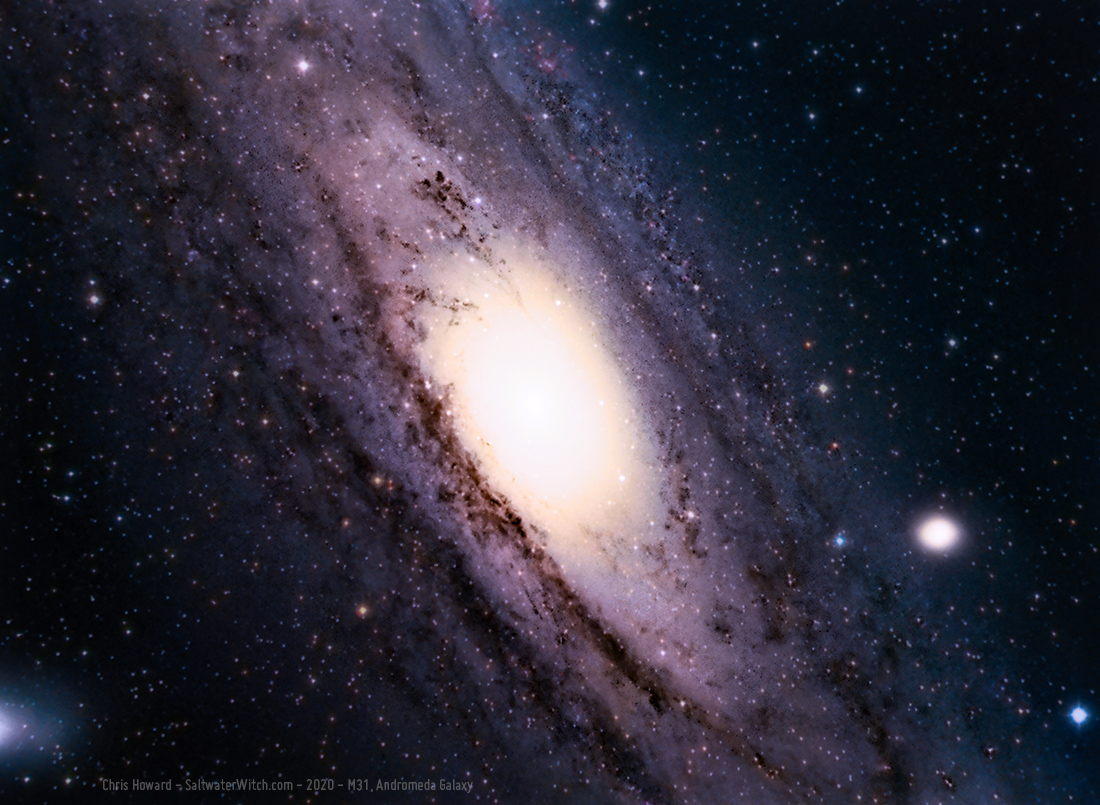
Posted July 17, 2020
Early moon rise with Venus and Aldebaran
Up early this morning and out in the backyard to get some shots of the moon and Venus--and Aldebaran! This is one shot with the Nikon D750 and the 70-300mm - focal length 95mm, 1.6 second exp at f/10, ISO 1600
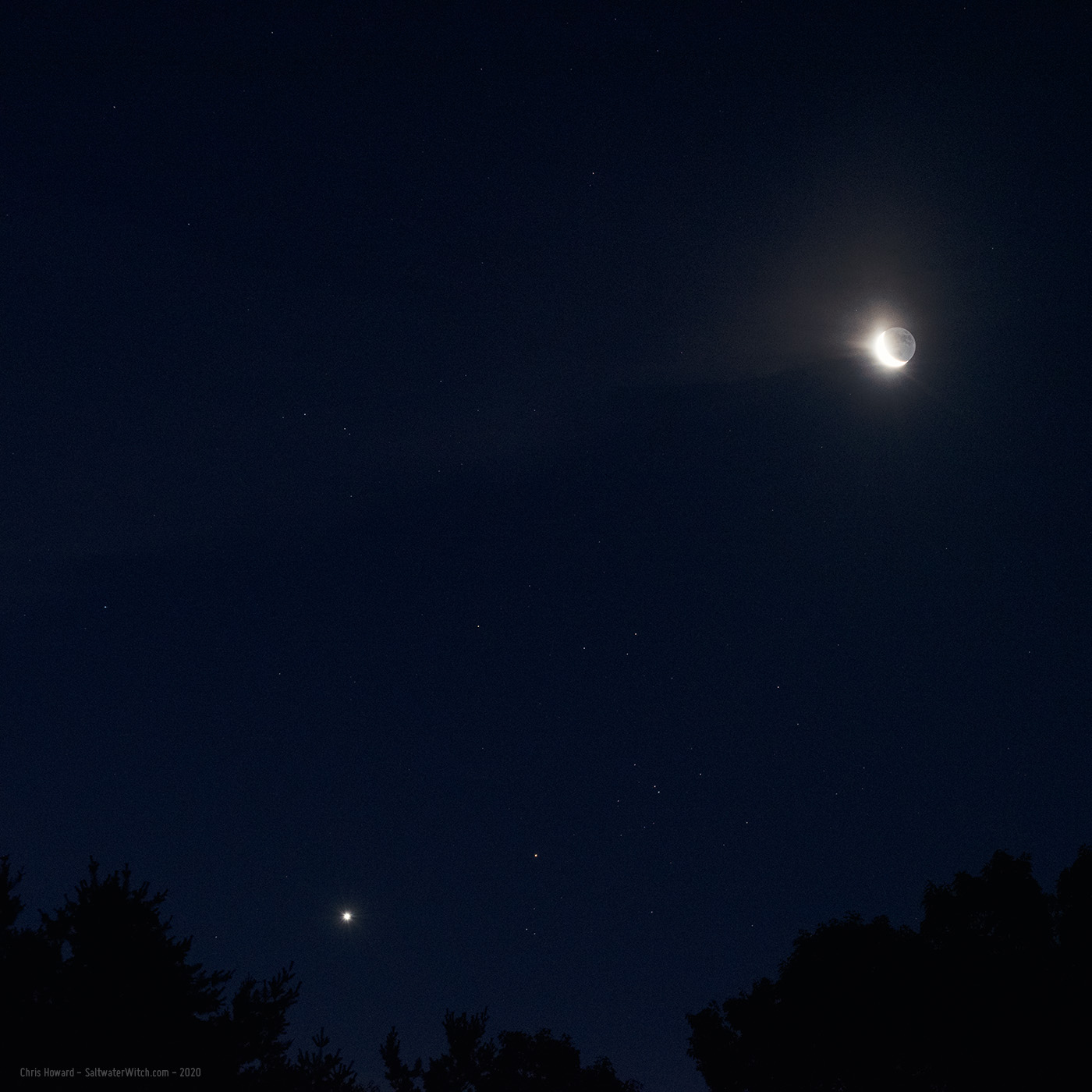
Posted July 17, 2020
Gulf of Mexico in NGC 7000
Here's another crop from the stacked 41 x 240 second subs of the North America Nebula (NGC 7000) in Ha, this time the "Gulf of Mexico" region, with some fantastic dark nebulae. This is a slightly narrower field of view than the Cygnus Wall, and so we're only looking at about 100 trillion miles from one side to the other. When you read that atomic hydrogen, the lightest element, makes up 75% of the baryonic mass of the universe, this is what they're talking about. Almost everything you see in this frame, dark and light clouds--even the stars, is hydrogen in various forms.

Posted July 12, 2020
Cygnus Wall in NGC 7000
I'm going to retake the last set of hydrogen-alpha frames for NGC7000 because the stars are a bit wonky, but the clouds of ionized hydrogen and massive structures of dark interstellar dust still look beautiful in this stacked set of 41 exposures. Here's a crop of the "Cygnus Wall" in NGC 7000. In this field of view, you're looking at about 118 trillion miles of dense clouds of interstellar ionized hydrogen. NGC 7000 is about 1600 lightyears aways, and the "Cygnus Wall" is about 20 light years long--about 118 trillion miles.
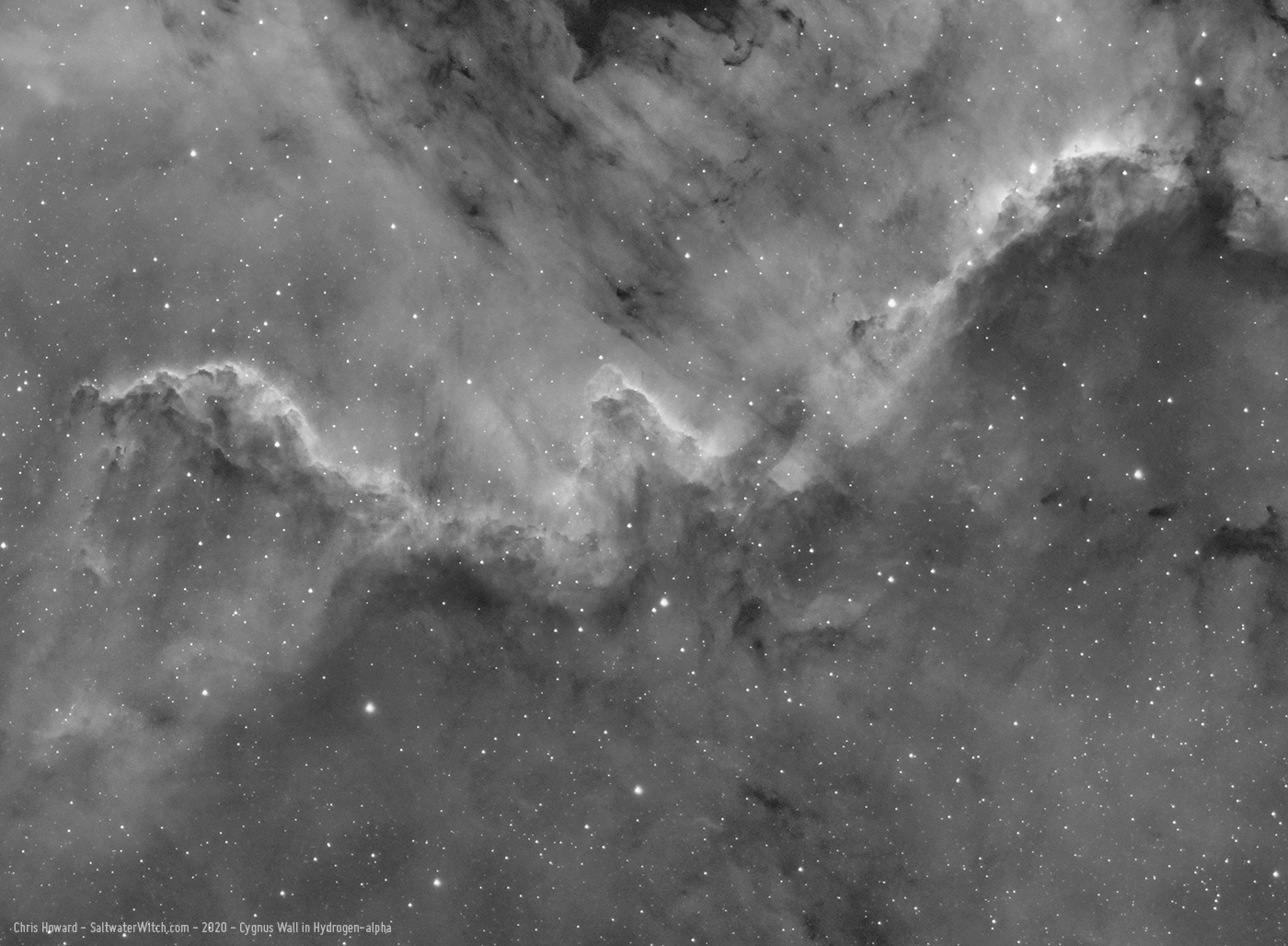
Posted July 12, 2020
IC 1396 in Narrowband
The IC 1396 region: IC 1396A is the Elephant's Trunk Nebula (center) surrounded by knots and bands of dark interstellar dust. Barnard 163 (B163) is the dark nebula center top. When it comes to narrowband imaging (Ha, OIII, SII) the constellation Cepheus is one of my favorites. I could spend a month just on IC 1396, the whole region, capturing the dozens of dark nebulae and the Elephant's Trunk at different focal lengths, but Cepheus also has the Iris Nebula and a bunch of other cool nebulae, including Barnard Catalogue objects like B169, as well as LDN 1272 and the wisps of hydrogen clouds that make up Sh2-134. All worthy targets for your telescope and camera. Notes: 48 x 240 second subs of Ha and OIII, William Optics GT81 Apo refractor, ZWO ASI1600MM-Pro mono camera, Astronomik filters, iOptron CEM25P mount.

Posted July 10, 2020
Pacman Nebula (NGC 281)
Pacman Nebula (NGC 281) in the Constellation Cassiopeia is an emission nebula about 9200 lightyears away from us, part of an HII region in the Perseus Arm of our galaxy. Notes: Shot from my backyard with the William Optics GT81 Apo refractor, iOptron CEM25P mount, Astronomik narrowband filters.
